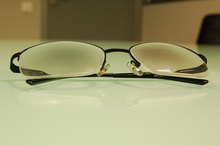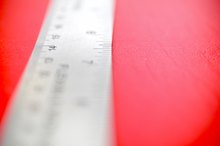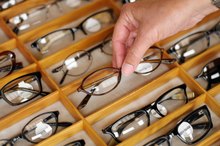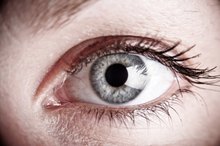How to Fit Bifocals
Bifocals are the most common type of multi-focal prescribed for people over 40, according to the Cleveland Clinic 2.
Bifocal fit and placement is an essential part of a person's eyeglass prescription.
The lenses must be measured accurately to ensure the best vision possible through the top part of the lens, which is used for seeing in the distance and the bottom part, which is for seeing up close. Bifocal measurements are done in several steps.
Measuring
Place yourself directly across from the person you are measuring. Sit at the same height so you are looking eye to eye on the same level. You can work across a small table or desk or place two chairs facing each other. Have the person put on the frames they are using for their new bifocals. Make sure the frame is sitting in a place that is comfortable and is adjusted on the bridge of the nose so the glasses will stay on properly.
How to Measure for a Trifocal Lens
Learn More
Start measuring the right bifocal height first. All optical measurements are done with the right eye first, then the left. Have the person look directly into your left eye. Draw a horizontal line on the lens at the highest point of the person's lower eyelid. This is placement of the top of the bifocal, according to opticianworks.com. Mark the lens with a non-permanent marker.
Remove the glasses and use the PD ruler to measure from the line you drew to the bottom of the frame. Safevision.net notes that this measurement is called the "B" measurement or segment height or "seg height" of a bifocal. Most bifocals are measured between 9 mm and 20 mm from the bottom of the frame. Record the measurement of the right bifocal and repeat the process with the left lens, measuring from the bottom of the frame to the top of the lower lid. Draw a line on the lens at the top of the lower lid. Record the seg height of the left lens.
How to Make Your Own Eye Chart
Learn More
Measure a frame without lenses in a similar fashion but without drawing a line. Hold the PD ruler vertically in front of the frame. Place the top of the ruler at the "0" line at the top edge of the person's right lower lid. Measure down to the bottom of the frame and record the segment height. Repeat with the left eye.
Measure the pupil distance. In addition to height, lenses are placed horizontally based on the distance between a person's pupils, called the pupillary distance, or PD. The average adult PD measurement is between 58 and 70 mm. Have the person look straight ahead and place the ruler horizontally in front of their eyes. Measure from the center of one pupil to the center of the other. Record the number. Bifocals have a distance PD and a near PD, which is usually 3 mm less than the distance PD. To check the near PD, have the person change their gaze to the middle of your forehead or nose. Remeasure their pupillary distance as their eyes converge slightly and record the number.
Tips
Progressive lenses, also called no-line bifocals, are measured higher than standard bifocals with lines. To measure a progressive lens, draw a line at the bottom of the person's pupil as they look straight ahead. Repeat with the left eye. Measure the dot to the bottom of the frame.
- Place yourself directly across from the person you are measuring.
- Draw a horizontal line on the lens at the highest point of the person's lower eyelid.
- Have the person look straight ahead and place the ruler horizontally in front of their eyes.
Related Articles
References
Writer Bio
Beth Richards, a freelance writer since 2002, writes about health and draws from her 25 years as a licensed dispensing optician. She has authored several books, writes for national magazines including "Country Living" and "Organic Family" and is a health and wellness features writer for several publications. She is earning a Bachelor of Arts in English from the University of Maryland.









